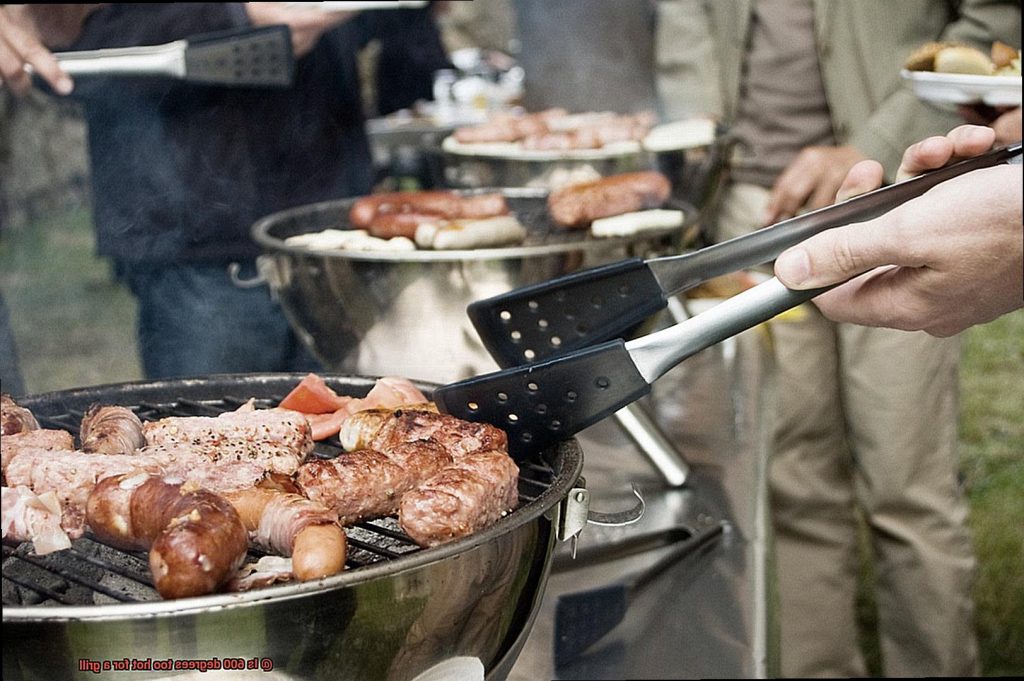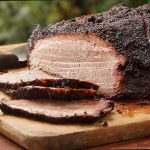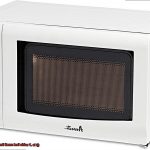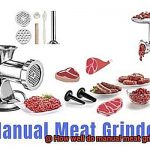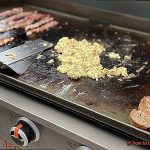It’s that time of year again – grilling season. And with it comes the age-old question: is 600 degrees too hot for a grill? If you’re like many grill masters out there, you love to push the limits when it comes to cooking up your favorite foods. But let’s face it, playing with fire can be dangerous. That’s why we’re here to explore whether or not 600 degrees is too hot for your grill and what could happen if you’re not careful.
Grilling at high temperatures can be both thrilling and treacherous. Some chefs swear by 600 degrees as the perfect temperature for searing meat, while others believe anything over 500 degrees is just asking for trouble. So why all the fuss about 600 degrees? What makes it such a contentious issue in the grilling world?
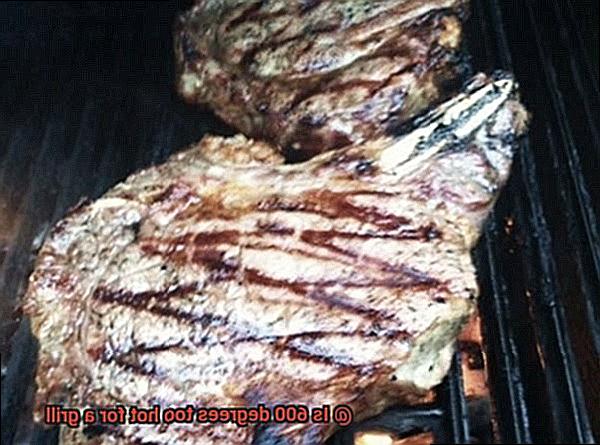
In this blog post, we’ll delve into everything you need to know about grilling at high temperatures. We’ll cover the science behind cooking at different temperatures, the risks of going too hot, and tips on how to achieve that perfect sear without putting yourself or your food in harm’s way. Whether you’re a seasoned pro or a newbie just starting out, this post will give you valuable insights to help you grill like a boss while keeping yourself safe and your food deliciously cooked.
Contents
What Happens at 600 Degrees on a Grill?
Grilling is a time-honored tradition that requires precision and technique. If you’re wondering what happens when you crank up the heat to 600 degrees, you’re not alone. Grilling at such high temperatures can be a bit intimidating, but with the right approach, it can yield some delicious results.
At 600 degrees, several things happen on the grill that are worth noting. Firstly, food cooks faster at higher temperatures. This means that your meal will be ready in no time, which can be a great advantage if you’re in a hurry. On the other hand, it’s essential to keep a watchful eye on your food since it can easily burn or char if left unattended.
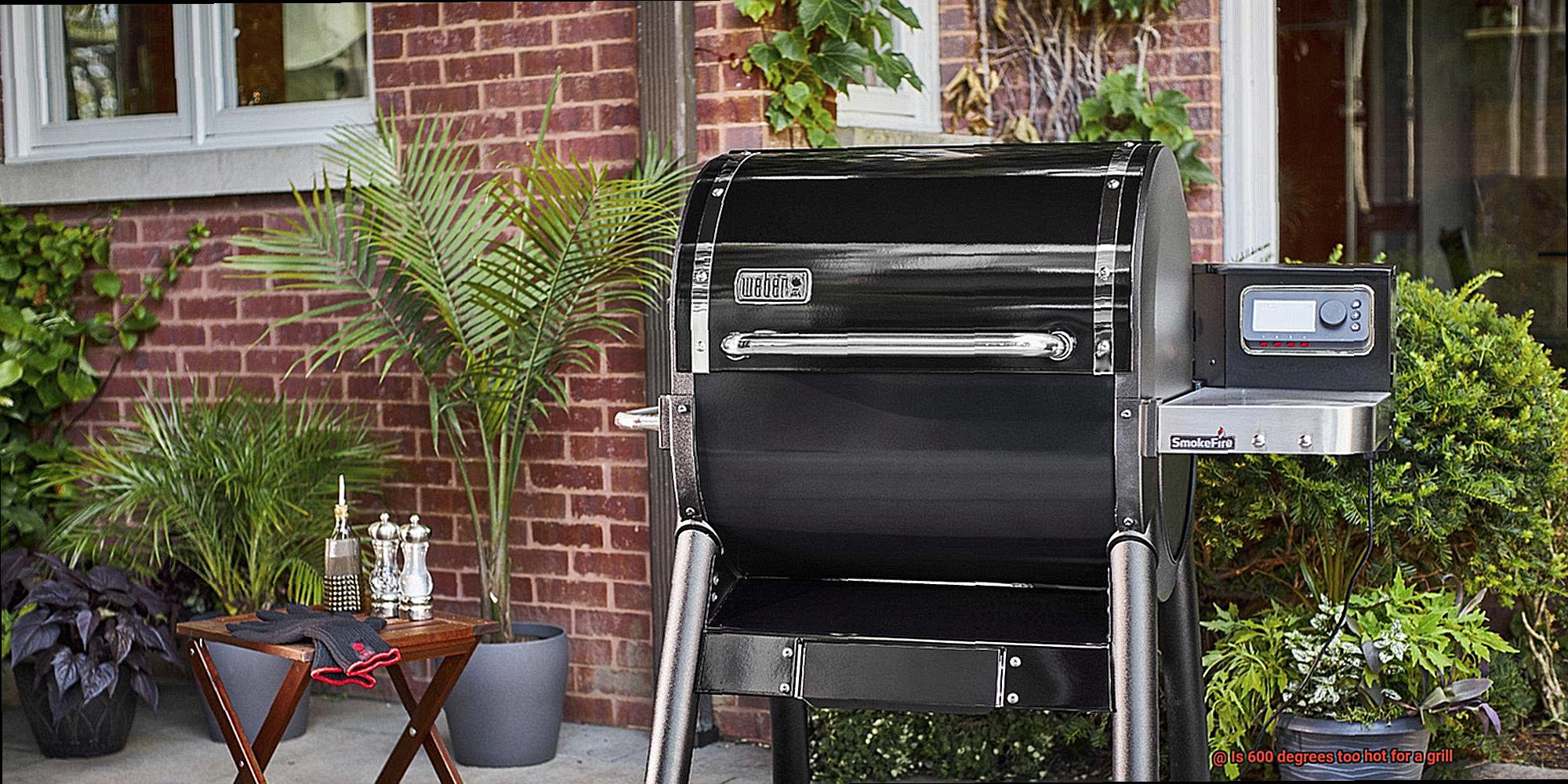
Secondly, the grill grates become scorching hot at this temperature. This means that any food that comes into contact with them gets a seared crust. While this crust can add an extra layer of flavor to your food, it can also make it tough and difficult to chew if overdone.
Thirdly, brace yourself for flare-ups. The high temperature causes the fat from your food to drip onto the hot coals or burners, leading to flames. Flare-ups can enhance the taste of your meal, but they can also ruin it if not handled correctly.
Finally, at 600 degrees, there’s going to be an abundant amount of smoke. The high temperature vaporizes any drippings and creates smoke. The smoke can add an extra layer of flavor to your food, but it can also be overwhelming and make your eyes water.
To cook successfully at 600 degrees, you need to exercise caution and common sense. Different foods require different temperature ranges; some can handle high heat well while others require lower temperatures. Research your grill model before attempting to cook at high temperatures as not all grills are created equal.
Is Every Grill Equipped to Handle High Temperatures?
Grilling is an art that requires precision and technique, especially when it comes to high-temperature cooking. But did you know that not every grill is equipped to handle the heat? Whether you prefer charcoal or gas, it’s important to understand which type of grill is best suited for high-temperature cooking and what to look for when selecting a grill.
Gas grills are generally better equipped to handle high temperatures than charcoal grills. With their powerful burners and high-quality materials, gas grills provide precise temperature control through the use of knobs and burners, allowing for more consistent heat distribution. Additionally, many gas grills feature infrared burners that can reach temperatures upwards of 700 degrees Fahrenheit – perfect for achieving that perfect sear on your steak or chops.
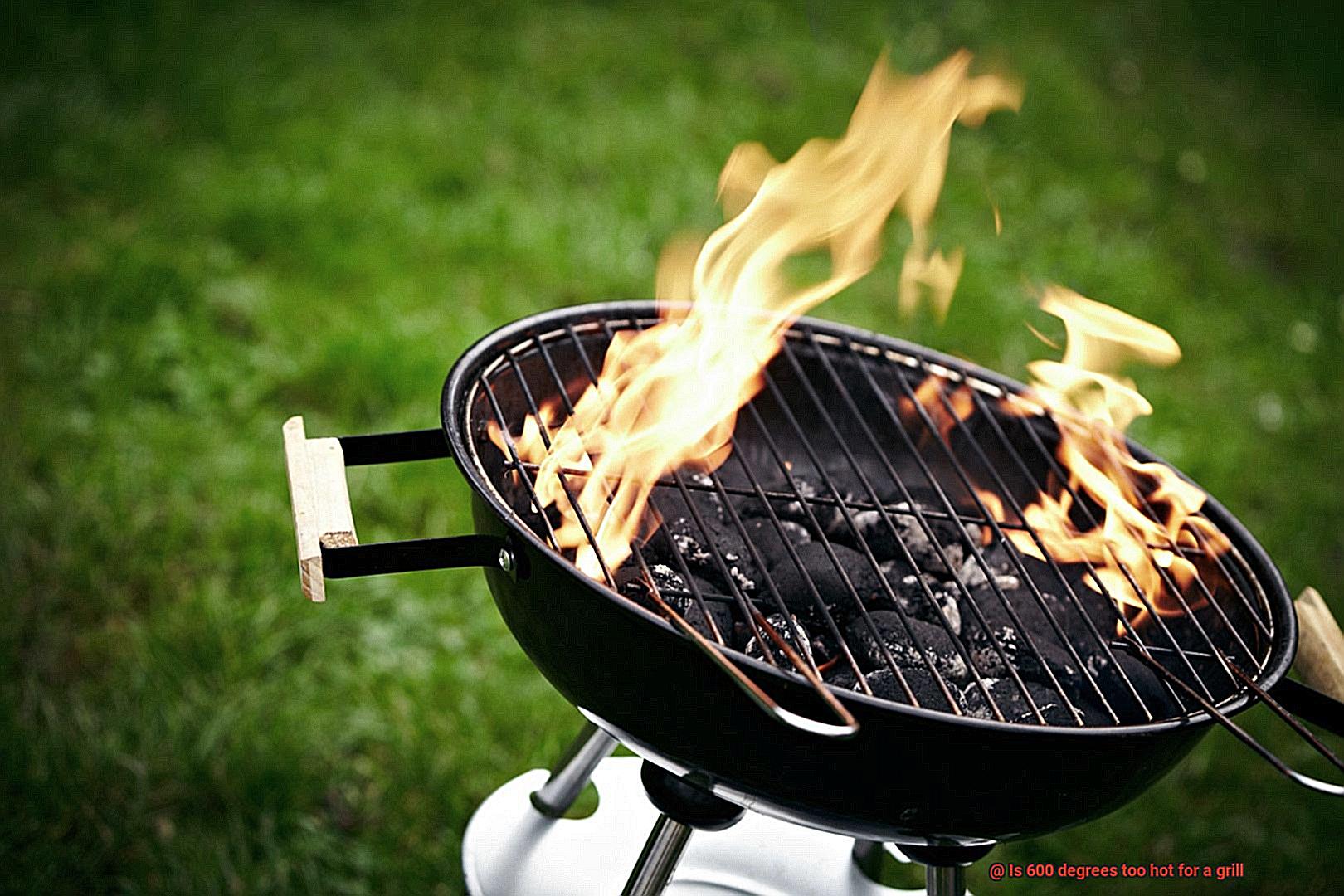
On the other hand, charcoal grills may struggle with maintaining high temperatures due to their reliance on airflow for combustion. While lump charcoal can burn hotter than briquettes, it can be difficult to control the temperature and achieve consistent heat. Charcoal grills may also be made with materials that are not designed to withstand extreme heat, such as porcelain-coated steel or aluminum.
That said, even if your grill is equipped to handle high temperatures, not all recipes or ingredients require such intense heat. Delicate fish fillets may become overcooked and dry at high temperatures, while thicker cuts of meat may benefit from a lower initial temperature before being seared at a higher heat. Therefore, understanding each recipe’s needs is critical in achieving optimal results and preventing overcooking or drying out your food.
What Kind of Food Can Handle High Heat?
Grilling is an art form that requires skill, patience, and the right ingredients. When it comes to high heat grilling, not all foods are created equal. As an expert, I’ve done some research on what kind of food can handle high temperatures without getting overcooked and dry. Here’s what I found.
Let’s start with meats. Beef, pork, and lamb are perfect options for high heat grilling. These meats have enough fat content to keep them moist and tender even when cooked at high temperatures. They also develop a delicious crust that adds texture and flavor to the dish. With these meats, you’ll be able to create juicy, flavorful meals that will leave your guests begging for seconds.
Fish and seafood are also great options for high heat grilling, but they require a bit more attention than meats. They cook quickly, so it’s important to monitor them closely to ensure they don’t get overdone. Some great options include salmon, swordfish, and shrimp. When done right, grilled fish and seafood can be absolutely delicious.
Vegetables are often overlooked when it comes to grilling, but they’re actually fantastic for high heat cooking. Zucchini, eggplant, bell peppers, onions, and mushrooms are just a few examples of vegetables that hold up well on the grill. They develop a delicious charred flavor that adds depth to any dish. Just make sure to cut them into larger pieces to prevent them from falling through the grill grates.
Finally, let’s talk about fruit. Grilled fruit may sound unusual but hear me out. Pineapple, peaches, and watermelon can all be grilled at high temperatures. When you grill fruit, it caramelizes their natural sugars creating a sweet and smoky flavor that pairs well with savory dishes or makes a delicious dessert.
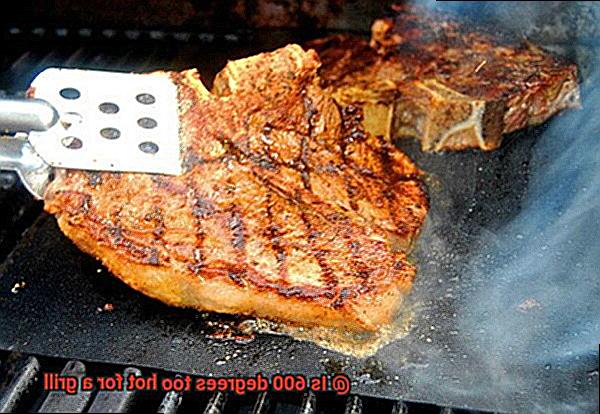
Potential Risks of Cooking at 600 Degrees
When it comes to grilling, there’s something irresistible about the smoky aroma and charred crust that can only be achieved by cooking at high temperatures. But before you fire up the grill and crank it up to 600 degrees, it’s important to understand the potential risks involved.
First and foremost, overcooking or burning your food is a major concern when cooking at such high temperatures. While a little bit of char can enhance the flavor and texture of your grilled meats and vegetables, leaving them on the grill for too long can result in a loss of nutrients and even the formation of harmful compounds like acrylamide and polycyclic aromatic hydrocarbons (PAHs), which are known to cause cancer.
Another risk associated with high-heat grilling is the possibility of flare-ups and fires. When grease or fat drips onto the heat source, it can ignite and cause flames to shoot up, potentially burning your food or even starting a fire. To prevent this, it’s crucial to keep a close eye on your grill and regularly clean it to prevent any buildup of grease or debris. And just in case, make sure you have a fire extinguisher nearby.
Finally, cooking at 600 degrees poses a danger to the cook themselves. The intense heat can cause serious burns if proper precautions aren’t taken, such as using long-handled utensils and heat-resistant gloves. And for safety’s sake, keep children and pets away from the grill while it’s in use.
Tips for Safely and Successfully Grilling at 600 Degrees
Grilling is a fun and delicious way to cook food, but when it comes to grilling at high temperatures like 600 degrees, safety should always be the top priority. Here are some tips for grilling safely and successfully at this high temperature.
Invest in a Quality Grill
Investing in a quality grill that can handle high temperatures is crucial for safe and successful grilling. Cheaper grills may not be able to handle the heat and could potentially cause safety hazards. A quality grill will also distribute heat evenly, preventing any hot or cold spots that could lead to undercooked or overcooked food.
Clean the Grill Thoroughly
Before grilling at high temperatures, make sure to clean the grill thoroughly to avoid any flare-ups caused by grease or debris. Use a wire brush to clean the grates and remove any leftover food particles. This will prevent any potential accidents or fires caused by excess grease or debris.
Preheat the Grill
Preheating the grill for at least 15-20 minutes before cooking at high temperatures is crucial. This ensures that the temperature is evenly distributed throughout the grill, allowing for even cooking of your food.
Use a Meat Thermometer
When grilling at high temperatures, it’s important to use a meat thermometer to ensure that the meat is cooked to the proper temperature and is safe to eat. This will prevent any undercooked or overcooked meat, which can be dangerous to consume.
Keep a Close Eye on Your Food
Grilling at high temperatures can cause food to cook quickly, so it’s important to keep a close eye on it to avoid overcooking or burning. Flip your food frequently to ensure it cooks evenly on both sides. Additionally, use high heat resistant gloves and tongs to handle your food on the hot grill to prevent any burns or accidents while grilling.
How to Prepare Your Grill for Cooking at 600 Degrees
Cooking at 600 degrees can create a delicious crust on your meats and vegetables, but it requires some preparation. Follow these five simple steps to prepare your grill for high-temperature cooking and achieve that perfect sear.
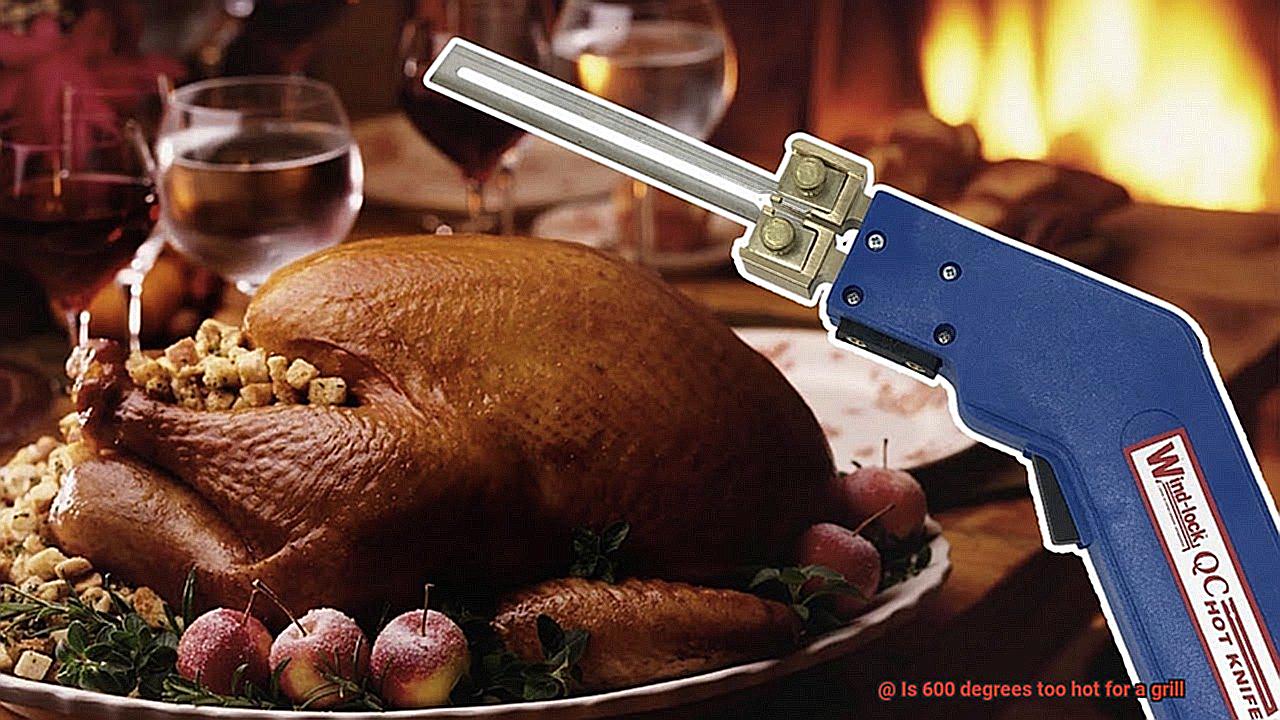
Step 1: Thoroughly Clean Your Grill
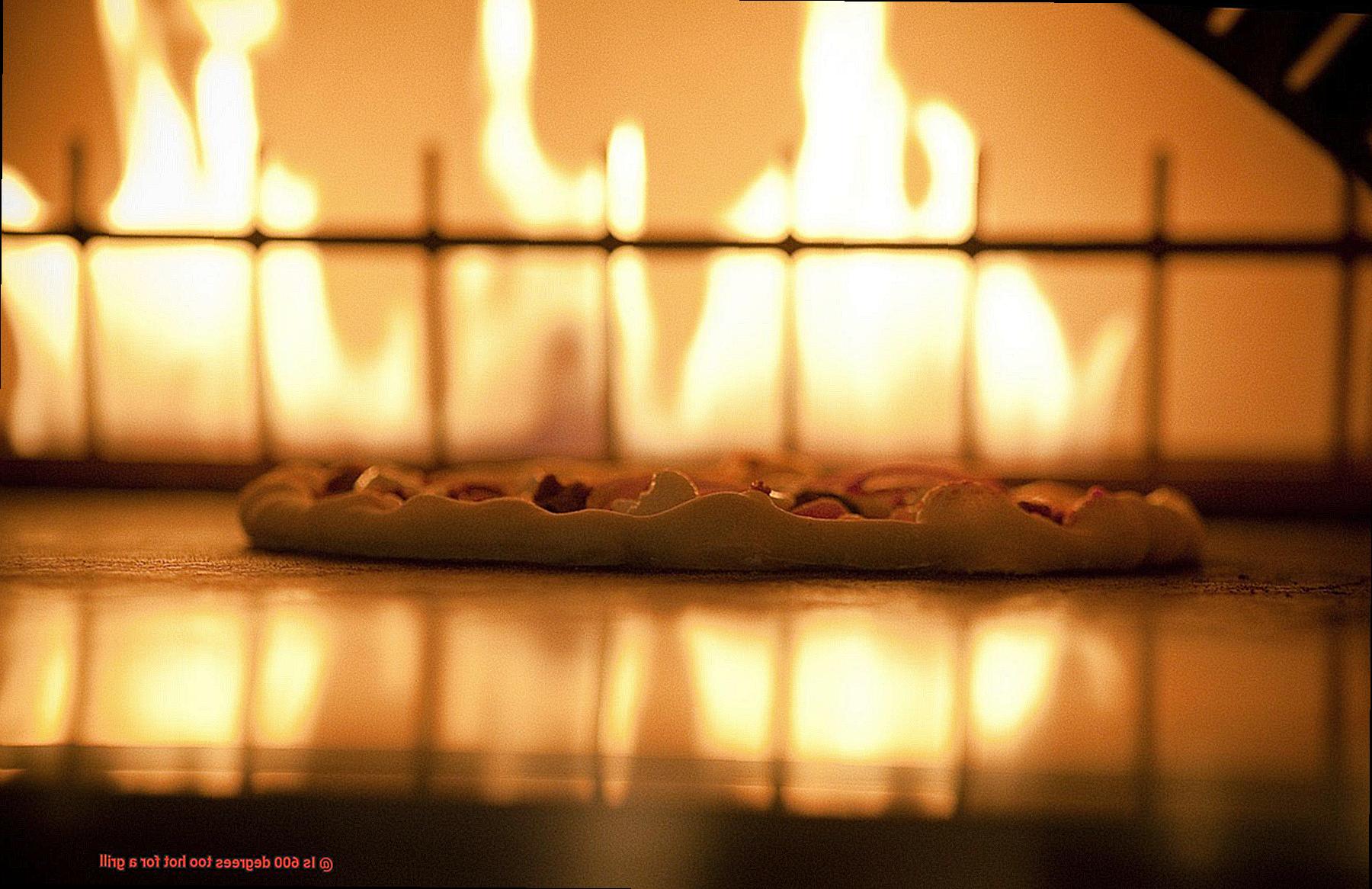
Before cooking at high temperatures, it’s essential to clean your grill thoroughly. Any leftover debris or grease can cause flare-ups, which can lead to uneven cooking or burnt food. Use a wire brush to scrub the grates and then clean the inside of the grill with a grill cleaner or soapy water. Rinse everything thoroughly and let it dry completely before using it.
Step 2: Preheat Your Grill to 600 Degrees
Next, preheat your grill to 600 degrees for at least 15-20 minutes. This will allow the grates to get hot enough to sear your food properly. You can check the temperature using a grill thermometer, which should be placed on the grates to get an accurate reading.
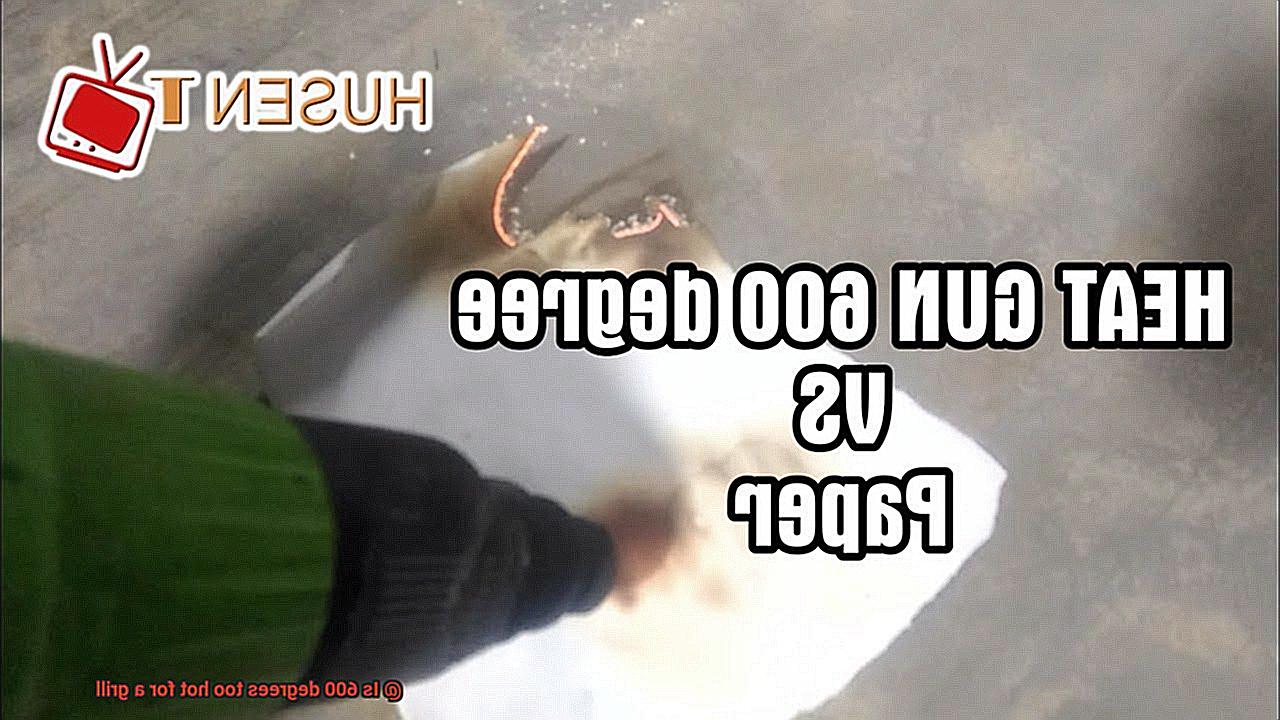
Step 3: Ensure You Have Enough Fuel
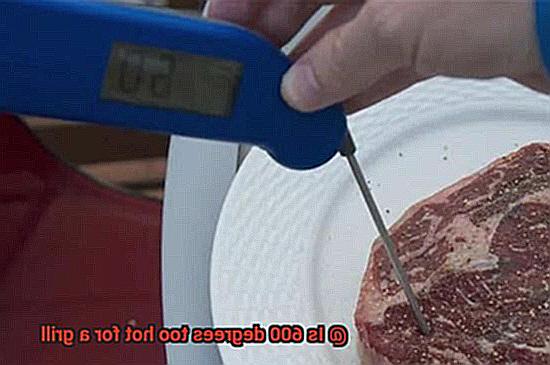
Another crucial factor in preparing your grill for high-temperature cooking is ensuring you have enough fuel. For gas grills, check that your propane tank is full or that you have enough natural gas running through it. For charcoal grills, make sure you have enough briquettes or lump charcoal to maintain a high temperature throughout the cooking process.
Step 4: Have the Right Tools On Hand
Having the right tools on hand for high-temperature grilling is essential for safety and convenience. A pair of long-handled tongs and a spatula are essential for flipping and removing food from the grill without getting burned. You may also want to invest in a grill basket for smaller items like vegetables or shrimp.
Step 5: Choose the Right Foods for High-Temperature Cooking
Finally, choosing the right foods for high-temperature cooking is crucial. Thicker cuts of meat or those with a higher fat content tend to do best at 600 degrees. It’s also important to keep an eye on your food while cooking at high temperatures, as they can cook quickly and may require more frequent flipping.
The Benefits of Cooking at High Temperatures
Then it’s time to turn up the heat and explore the benefits of cooking at high temperatures. From locking in flavors to achieving that perfect char, here are some juicy details on why high heat is the way to go.
First up, let’s talk searing. Cooking at high temperatures can give your meats and veggies that perfect sear, which locks in all those delicious juices and flavors. This is especially important when grilling meats, as it helps prevent them from drying out. With high heat, you’ll be able to achieve mouthwatering dishes that are sure to impress.
Next, let’s get crispy. Cooking at high temperatures can create a crispy and caramelized exterior on your food, which is particularly desirable when grilling vegetables. The high heat creates a charred exterior that adds depth and complexity to the flavor. Trust us, once you’ve tried perfectly grilled peppers or onions, you’ll never want to go back.
But it’s not just about taste – high heat can also save you time. By cooking quickly at a high temperature, you can achieve perfectly cooked dishes in a fraction of the time it would take with lower heat. This is especially useful when grilling thinner cuts of meat or vegetables. So don’t waste time waiting around for your food to cook – turn up the heat and get those delicious results in no time.
Last but not least, let’s talk about that classic smoky flavor. When fat drips onto the hot coals or grates, it creates smoke that infuses the food with a delicious smoky flavor. And there’s nothing quite like that authentic smoky taste that only high heat can provide.
Common Mistakes When Grilling at High Temperatures
Grilling at high temperatures is an art that even experienced grillers can struggle with. It’s easy to make mistakes that can turn your culinary masterpiece into a disaster or even cause damage to your grill. So what are the common mistakes when grilling at high temperatures and how can you avoid them?
Firstly, using excessive heat is a common mistake that can ruin your food. It may seem like a good idea to cook your food faster, but this can lead to overcooked or burnt dishes. Instead, find the right balance between heat and cooking time to achieve the perfect sear without sacrificing taste and texture.
Secondly, not preheating your grill is a crucial mistake that can affect the outcome of your food. Preheating your grill allows it to reach the right temperature for cooking and helps prevent uneven cooking or undercooked food. Give your grill some time to heat up before placing your food on it for best results.
Using the wrong type of fuel or not cleaning your grill grates properly can also lead to issues when grilling at high temperatures. Charcoal briquettes may be a tempting option, but they can result in inconsistent heat and flavor. Opt for lump charcoal instead for a more consistent heat and taste. Additionally, cleaning your grill grates before each use is essential to avoid sticking and uneven cooking.
Last but not least, always use a thermometer when grilling at high temperatures. It’s challenging to know if your grill is at the right temperature without one, leading to undercooked or overcooked dishes. A thermometer will help you achieve the perfect sear every time.
blXMdEZXuBw” >
Conclusion
To grill at 600 degrees or not to grill at 600 degrees, that is the question. While some may argue that high temperature grilling is the only way to achieve that perfect sear and smoky flavor, others may caution against going above 500 degrees. The truth lies somewhere in between.
Grilling at high temperatures can be a thrilling experience, but it can also be dangerous if proper precautions are not taken. Overcooked or burnt dishes, flare-ups, and fires are all potential hazards when grilling at such high temperatures. However, with the right equipment and techniques, you can achieve delicious results without putting yourself or your guests in harm’s way.
Investing in a quality grill that can handle high temperatures is essential. Cleaning the grill thoroughly before each use and preheating it for at least 15-20 minutes will ensure even cooking and prevent any unwanted surprises. Using a meat thermometer to check for proper cooking temperature is also crucial.
When it comes to choosing foods for high-temperature grilling, opt for beef, pork, lamb, fish, and seafood. Vegetables like zucchini and eggplant hold up well on the grill while fruits like pineapple or peaches can add a sweet twist to your menu.
In conclusion, grilling at 600 degrees is not too hot if done correctly with caution and common sense. With proper preparation and technique combined with quality ingredients and equipment, you’ll be able to achieve mouthwatering dishes that will leave your guests begging for seconds.

